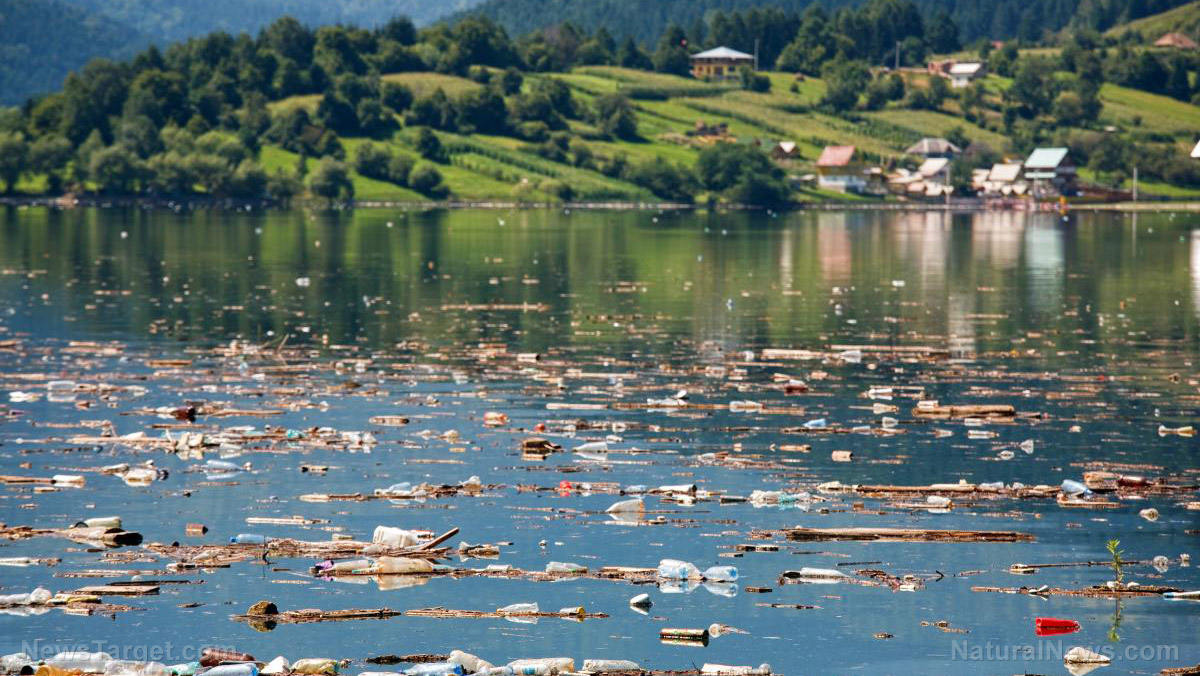Over 300 BILLION pieces of plastic now POLLUTE the Arctic Ocean as humankind accelerates destruction of life everywhere
12/01/2018 / By Rhonda Johansson

Around 300 billion pieces of plastic (or around 150 millions tons of waste) pollute the Arctic Ocean, concludes an international team of researchers after assessing the levels of plastic waste found east of Greenland and in the Barents Sea off Norway and Russia. Despite the relative isolation of these areas, the researchers say that man-made pollution has reached dangerous levels. Their report, which appears in Science Advances, labels these zones as “polar graveyards” and warns of the potential hazards these hot spots may have. In particular: the toxins in these plastic pieces can leak into the water, altering life forms and natural pH levels. Wildlife may also swallow the plastic or get entangled.
“The total load of floating plastic for the ice-free waters of the Arctic Ocean was estimated to range from around 100 to 1,200 tons, with 400 tons composed of an estimated 300 billion plastic items as a mid-range estimate,” the study reads. “The fragmentation and typology of the plastic suggested an abundant presence of aged debris that originated from distant sources.”
The team suggests that it is likely the waste was swept north by ocean currents; the Arctic becoming the “dead end” for waste dumped in the Atlantic Ocean off Europe and the United States. This would explain the confusing fact that a sparsely populated region could produce higher than expected waste. The authors write on Daily Mail, “The northeastern Atlantic sector of the Arctic Ocean appeared as a dead end for the surface transport of plastic pollution.”
Researchers came to their conclusion after sampling 42 Arctic sites through the 2013 Tara Oceans circumpolar expedition. Their survey found hundreds of thousands of tiny bits of plastic in the northeastern Atlantic region. These pieces were evidently old and appeared to have originated from various places in Europe and North America.
Support our mission and protect your health: Organic Seeds of Life combines Red Raspberry Seed Power, Black Cumin Seed Power and Red Grape Seed Powder into the most potent nutrient-rich supplemental superfood powder you've ever experienced. Loaded with flavonoids, antioxidants, anthocyanins, OPCs, ALA and a vast array of vital nutrients. Learn more here.
Lead author, Andres Cozar of the University of Cadiz in Spain says, “Ninety-nine percent of the floating plastic in the Arctic was confined in the Greenland and Barents Seas….the plastic pollution in the rest of the Arctic Polar Circle was low or absent.” Cozar surmises that marine plastic pollution may become more prevalent in the Arctic as societies continue to dump waste in the ocean.
The potential ecological implications
Earlier research from the World Economic Forum has already raised concern over the amount of plastic debris floating in the oceans. The study, entitled The New Plastics Economy: Rethinking the Future of Plastics estimates that eight million tons of plastic waste are dumped into the ocean every year. This is equivalent to one truckload of trash every minute. Authors of the study go even further, stating that 95 percent of plastic packaging is lost after only one use. The study concludes with, “In a business-as-usual scenario, the ocean is expected to contain one ton of plastic for every three tons of fish by 2025, and by 2050, more plastics than fish.”
An article on One Green Planet says that around 100 million marine mammals are killed each year from plastic pollution. Animals mistake the debris for food and end up eating the plastic. As a consequence, their digestive systems become blocked and the animals die a very slow and painful death.
A study of the Loggerhead species of sea turtles concludes that 15 percent of young turtles consume such large quantities of plastic that their digestive system are obstructed. Other mammals that are at risk include seals, sea lions, whales and dolphins, as well as seabirds.
A report on Tech Times claims that 31 percent of cetaceans are ingesting plastic, leading to a 22 percent increased risk of death. Sperm whales, in particular, are especially vulnerable as plastic debris bear a strong resemblance to their main prey, the squid. Necropsies of sperm whales almost always reveal a piece of plastic in their system. Aside from mistaking these plastic pieces for food, larger mammals can get caught in plastic nets.
Conservationists urge both local and international authorities to design better cleanup methods.
Keep yourself informed about current events regarding our oceans at CleanWater.com.
Sources include:
Tagged Under: Ecology, environ, environment, marine life, microplastics, ocean debris, ocean life, plastics
RECENT NEWS & ARTICLES
COPYRIGHT © 2017 COLLAPSE.NEWS
All content posted on this site is protected under Free Speech. Collapse.news is not responsible for content written by contributing authors. The information on this site is provided for educational and entertainment purposes only. It is not intended as a substitute for professional advice of any kind. Collapse.news assumes no responsibility for the use or misuse of this material. All trademarks, registered trademarks and service marks mentioned on this site are the property of their respective owners.




















